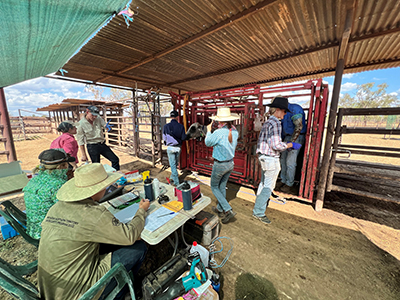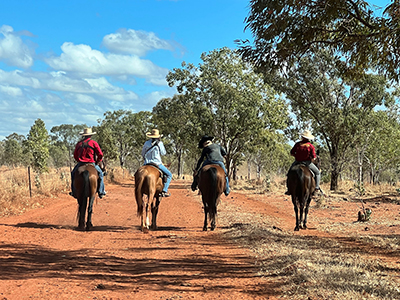Calf loss collaboration at Manbulloo

The Manbulloo second round muster involved a lot of technologies, and a lot of exciting new beginnings for the Department of Industry, Tourism and Trade, the University of Queensland and Central Queensland University, collaborating on projects with a focus on calf loss.
Cattle were mustered to the yards for pregnancy testing, with a cohort of cows due to calve between now and Christmas fitted with a variety of technologies designed to help us better understand the behaviours and outcomes for cows and calves around the time of calving.
Some of the technologies fitted to cows included GNSS (GPS) collars, accelerometer ear tags and rumen boluses which record and transmit data. All cows had a variety of crush side data collected, including weight and pregnancy stage. The cows in the trial will be closely monitored during calving, with hopes to investigate the impact of high protein feed supplementation in the lead up to calving, and how this may impact overall production and calf survival.
Technologies fitted to trial cows will enable the project team to identify spatial behaviours around calving as well as how these vary depending on the fate of the offspring. Accelerometer ear tags will enable movement data to be collected that can help to understand and identify periods of time where cows display certain behaviours, such as grazing, walking, resting, or calving. Once collated and analysed, this type of data can show not only the variation between individuals during calving time, but also help to understand how some behaviours may contribute to increased risk of mortality. Another aim is to develop technology that uses accelerometer data to identify calving and send an alert when calving occurs.
The team of collaborators in this project have a broad range of skills and knowledge and we are excited to see where the results lead, and how they can improve outcomes for the industry.

